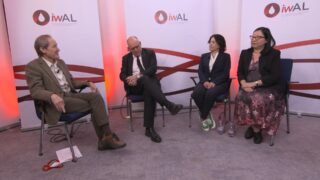MRD monitoring patients using the FLT3-ITD as a marker of MRD used to be frowned upon, shall we say. People felt that because the FLT3-ITD mutation was the last hit in leukemogenesis, because occasionally a patient with relapse without it or a patient who didn’t have it at diagnosis relapsed with it, they came and went and were unstable, therefore of little value...
MRD monitoring patients using the FLT3-ITD as a marker of MRD used to be frowned upon, shall we say. People felt that because the FLT3-ITD mutation was the last hit in leukemogenesis, because occasionally a patient with relapse without it or a patient who didn’t have it at diagnosis relapsed with it, they came and went and were unstable, therefore of little value. Which made no clinical sense whatsoever and was largely made up by pathologists who did not take care of these patients, as near as I can tell, because the mutations were clearly driving the disease that was killing our patients. So we challenged that concept of MRD and FLT3-ITD mutations and worked to develop an MRD assay for FLT3-ITD AML in general. And in every aspect of the disease that we have looked at, it has a huge prognostic effect, and more importantly, it’s an utterly actionable MRD marker, which is almost never the case for other MRD markers. You actually can see it and act upon it because you have FLT3 inhibitors. So it is now the hot new thing in FLT3 is MRD. And in fact, now we are reversing all of the thoughts of the prior years that it’s not useful in managing the disease.
This transcript is AI-generated. While we strive for accuracy, please verify this copy with the video.














